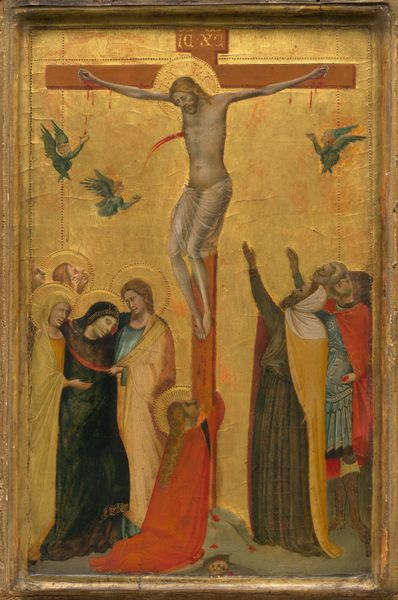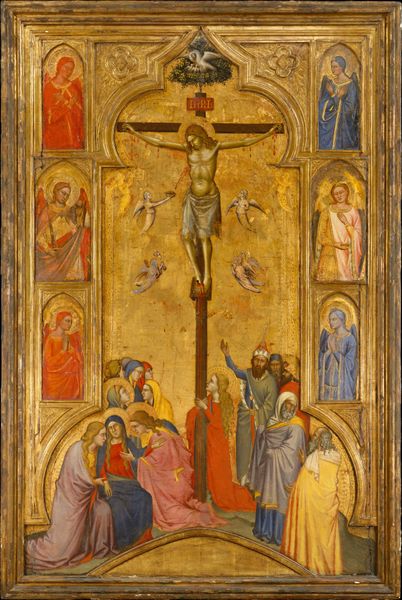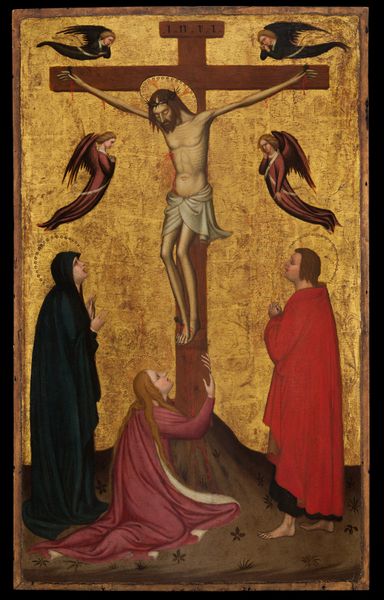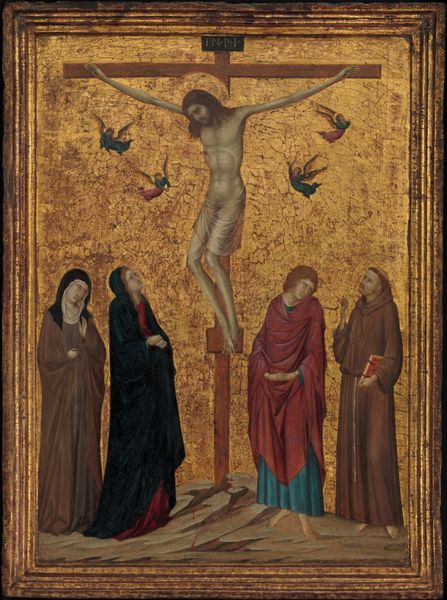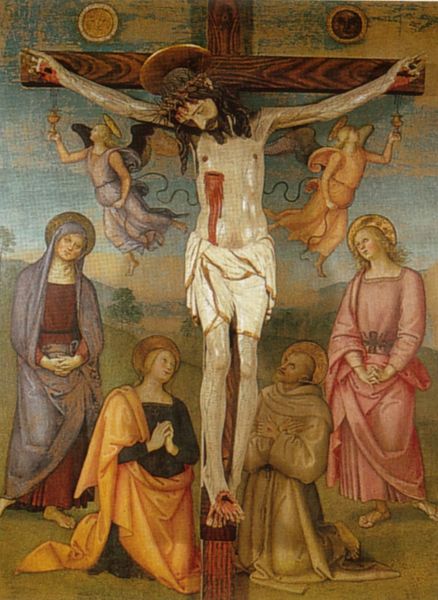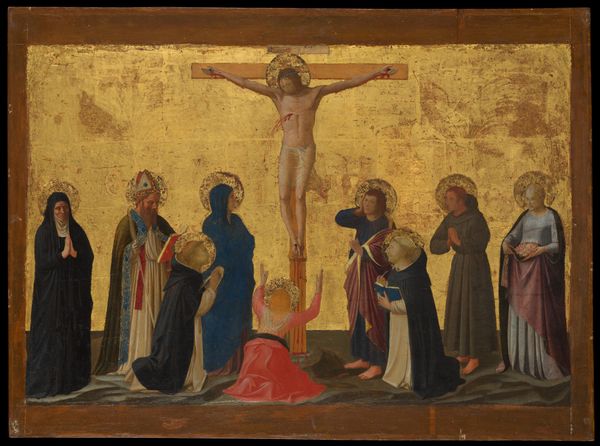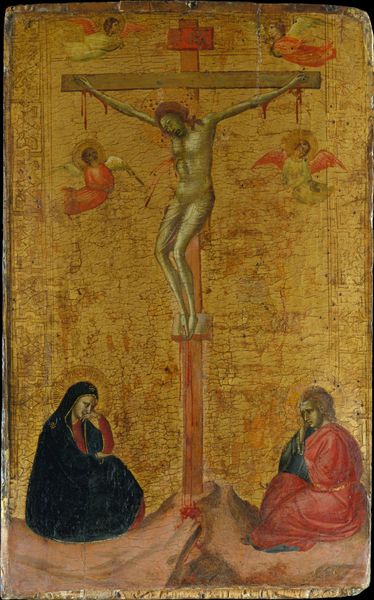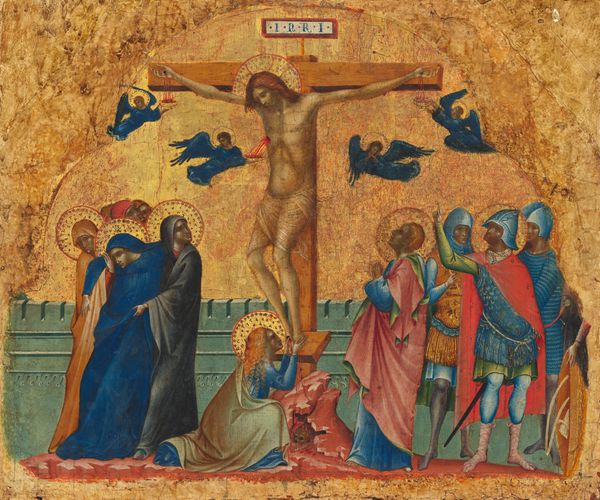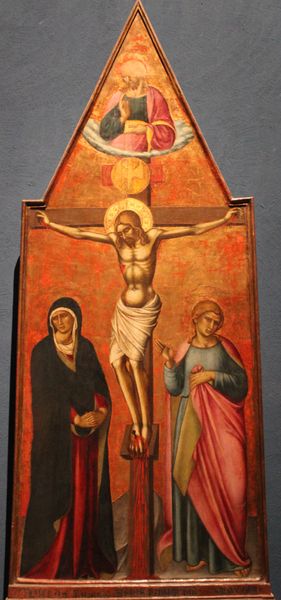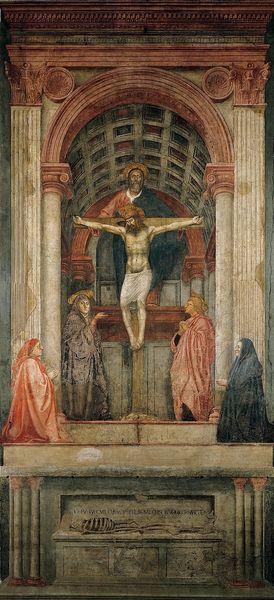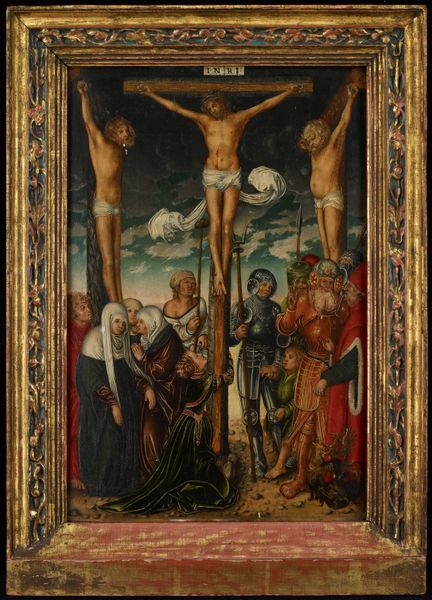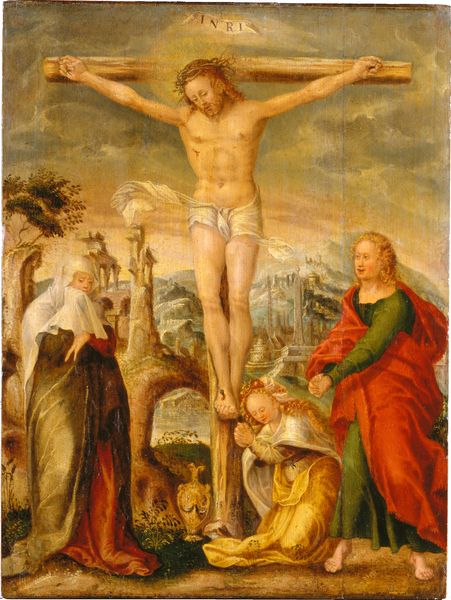
panel, tempera, painting
#
portrait
#
medieval
#
panel
#
tempera
#
painting
#
gothic
#
figuration
#
oil painting
#
crucifixion
#
history-painting
#
italian-renaissance
#
virgin-mary
#
christ
Dimensions: Left wing, overall, with engaged frame, 15 1/8 x 10 5/8 in. (38.4 x 27 cm); right wing, overall, with engaged frame, 15 x 10 5/8 in. (38.1 x 27 cm)
Copyright: Public Domain
Curator: Here we have Segna di Buonaventura’s "The Crucifixion," a tempera on panel work dating from around 1312 to 1318. Editor: The overwhelming feeling is… sorrow. The density of figures crammed at the bottom amplifies the isolation of Christ at the top, surrounded only by floating angels. Curator: The composition is certainly designed to evoke pathos, yes. But it is worth considering the wider societal impact. The Franciscans, particularly influential in Siena, promoted a more human, suffering Christ to inspire piety among the laity. This image, displayed in a church or private setting, would have served that exact purpose. Editor: That's evident. But the technique itself… Look at the tooled gold leaf used for the background. It is an extravagance! The economic resources needed to create something like this surely spoke to a certain social strata who are not in the throes of actual suffering. Curator: The use of precious materials speaks to the cultural and religious significance. Gold symbolizes divinity. This was about instructing the viewers on what the elite deemed as sacrosanct, reinforcing the spiritual authority of the Church through visual spectacle. Editor: Authority indeed. It’s about managing suffering through ritualized forms of making. I’m curious about the layering of the tempera paint. There’s something so compelling about seeing how the artist methodically built up these forms to generate, shall we say, *the intended* emotional response. I want to understand more about who prepared the panel and what pigments where ground up by what workshop members, male or female. Curator: It would have been a workshop effort, inevitably. Segna di Buonaventura was one in a network of Sienese artists operating within an artistic environment fostered by political and religious patronage. Editor: But that network also means human labor and material reality. Even in this very small section we are peering at, can we account for the various levels of the gilded frame in correlation with a painter’s payment or community needs for food? It might humanize the topic and its history. Curator: Certainly a more inclusive study into this masterpiece would serve us well. I, for one, must confess my perspective could benefit from examining that wider scope. Editor: Likewise. Viewing it through strictly material terms doesn't encompass the painting's ability to, indeed, move us. It has staying power, centuries on, whatever our approach.
Comments
No comments
Be the first to comment and join the conversation on the ultimate creative platform.
